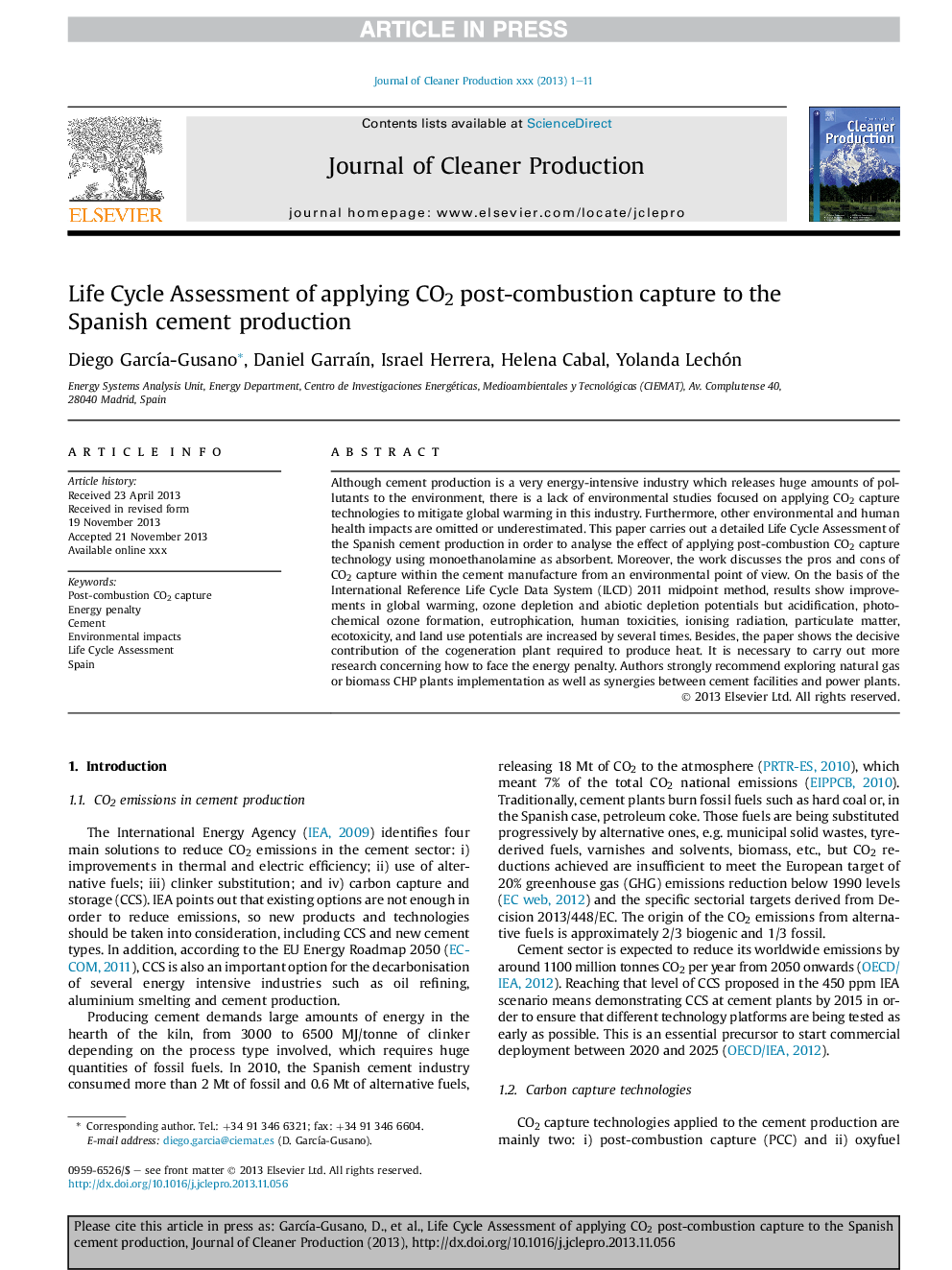| Article ID | Journal | Published Year | Pages | File Type |
|---|---|---|---|---|
| 8103413 | Journal of Cleaner Production | 2015 | 11 Pages |
Abstract
Although cement production is a very energy-intensive industry which releases huge amounts of pollutants to the environment, there is a lack of environmental studies focused on applying CO2 capture technologies to mitigate global warming in this industry. Furthermore, other environmental and human health impacts are omitted or underestimated. This paper carries out a detailed Life Cycle Assessment of the Spanish cement production in order to analyse the effect of applying post-combustion CO2 capture technology using monoethanolamine as absorbent. Moreover, the work discusses the pros and cons of CO2 capture within the cement manufacture from an environmental point of view. On the basis of the International Reference Life Cycle Data System (ILCD) 2011 midpoint method, results show improvements in global warming, ozone depletion and abiotic depletion potentials but acidification, photochemical ozone formation, eutrophication, human toxicities, ionising radiation, particulate matter, ecotoxicity, and land use potentials are increased by several times. Besides, the paper shows the decisive contribution of the cogeneration plant required to produce heat. It is necessary to carry out more research concerning how to face the energy penalty. Authors strongly recommend exploring natural gas or biomass CHP plants implementation as well as synergies between cement facilities and power plants.
Keywords
Related Topics
Physical Sciences and Engineering
Energy
Renewable Energy, Sustainability and the Environment
Authors
Diego GarcÃa-Gusano, Daniel GarraÃn, Israel Herrera, Helena Cabal, Yolanda Lechón,
